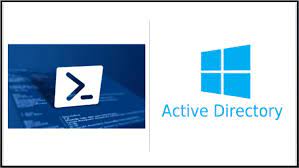
Effortless AD User Export: Extract User Data in a Few Clicks
Active Directory (AD) is actually a Microsoft support that deals with the identities and authorization of customers and computer systems inside an company. It shops all essential information, like user profile information, business units, and class insurance policies. Removing user info from AD is probably the essential jobs of the manager. However, moving through AD can be challenging. Nonetheless, there exists a answer that makes user information extraction effortless – AD user export. In this article, we will cover tips on how to get AD user details easily.
1. Windows Powershell
One of many least complicated and many popular methods to remove user information from AD is through Microsoft windows Powershell. Powershell is actually a command-range tool that managers use to automate jobs and control settings. The AD module in Powershell makes extracting user details an trouble-free method. To remove user info, you have to available Powershell being an manager and enter the control ‘Get-ADUser -Filter * -Components * | Export-Csv ‘C:ADUserExport.csv’.’ As soon as you struck enter, Powershell will remove the user details and conserve it in shine-suitable CSV file format.
2. CSVDE
An alternate way to get ad user import details are through CSVDE – a demand-series tool that is included with Microsoft windows Host that enables administrators to export AD user info to some CSV file format submit. This device is easy to utilize, as all it requires is launching a demand timely and keying in the command ‘csvde -f C:ADUserExport.csv -d “DC=DOMAIN,DC=org” -r “(objectCategory=user)” -l “cn, givenName, sn, postal mail, sAMAccountName”.’ The demand syntax will result user info within a CSV document that can be used with any software program that can handle CSV.
3. LDIFDE
LDIFDE is an additional demand-series resource that administrators use to get user data from AD. It exports user information in LDIF format, an internet normal structure used to represent LDAP directory content. The syntax for utilizing this device is very complex, nevertheless, you will be able to quickly remove user details in the event you follow the instructions appropriately. The order lines are ‘ldifde -f C:ADUserExport.ldf -d “DC=Domain name,DC=org” -r “(objectCategory=user)” -l “cn, givenName, sn, mail, sAMAccountName”.’ This control will remove user information and preserve it inside an LDIF submit formatting.
4. Mission Active Directory PowerShell Unit
The Pursuit Active Directory PowerShell module can be another preferred AD user export option. This unit expands AD’s capabilities by introducing numerous cmdlets that can make removing user info easy and simple. To utilize this instrument, you should download the Journey Active Directory PowerShell module and do the installation on the hosting server. After set up, it is possible to get user info by typing within the demand ‘Get-QADUser | Export-Csv “C:ADUserExport.csv”.’ This order will extract user data and help save it in CSV structure.
5. ADManager In addition
ADManager Additionally can be a powerful online-centered resource that helps in reducing the job from it managers in controlling consumers, computers, and connections in AD. This instrument gives an straightforward-to-use web user interface to draw out user data from AD. Administrators can decide which characteristics they need to draw out, utilize filters, and make custom records. With ADManager As well as, taking out user information is an inconvenience-cost-free method, and managers don’t want to use Powershell or demand-series tools any more.
Verdict:
Removing AD user information can be quite a challenging task for administrators, but it’s crucial in dealing with and administering AD. Thankfully, there are various tools and techniques available to simplify AD user removal. Home windows Powershell, CSVDE, LDIFDE, Quest Active Directory PowerShell module, and ADManager Additionally are exceptional choices to get AD user info. Pick the method that best suits your needs and make user info removal a hassle-cost-free method.